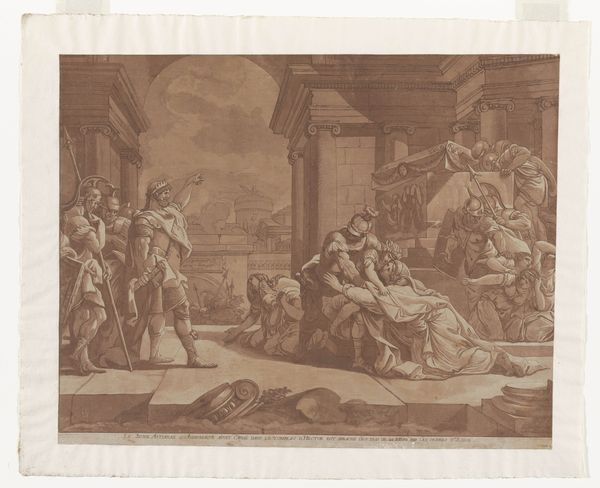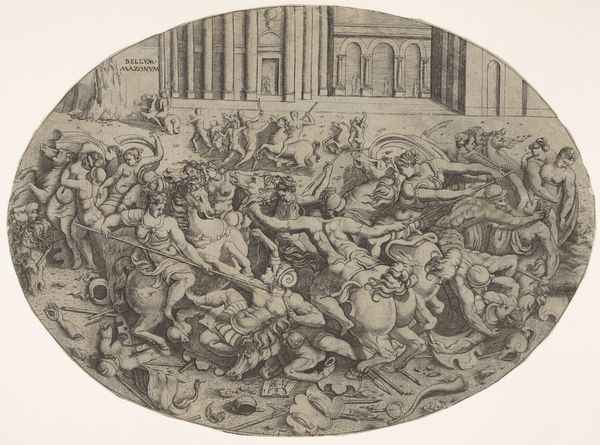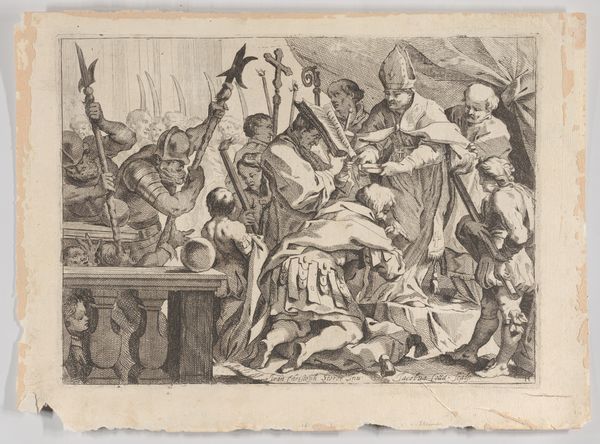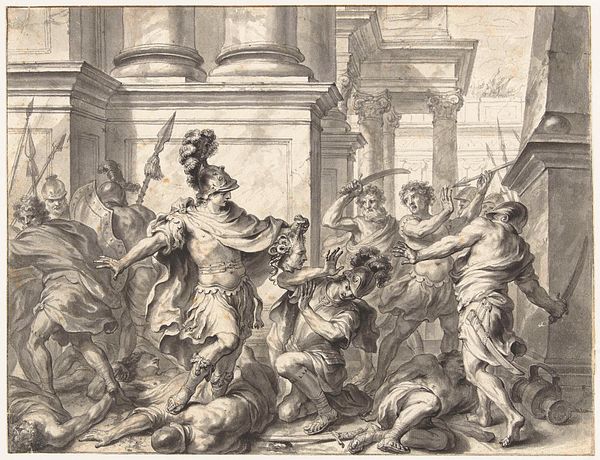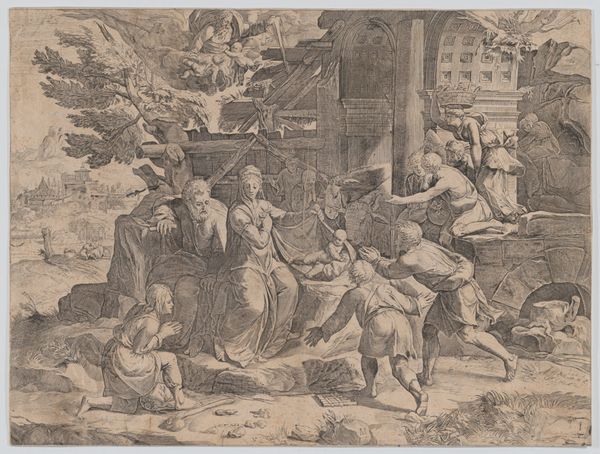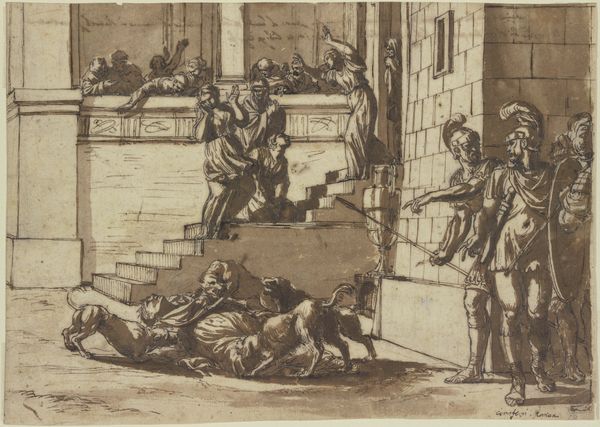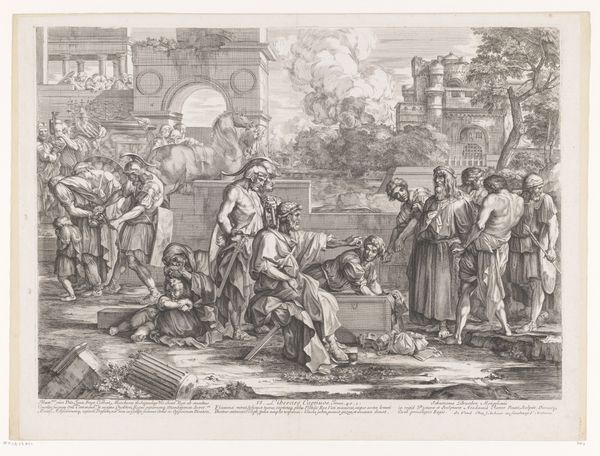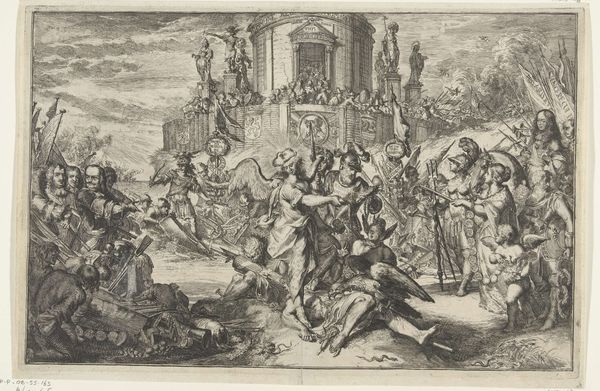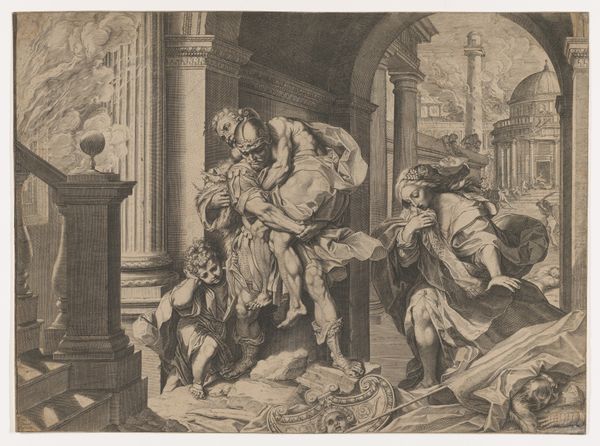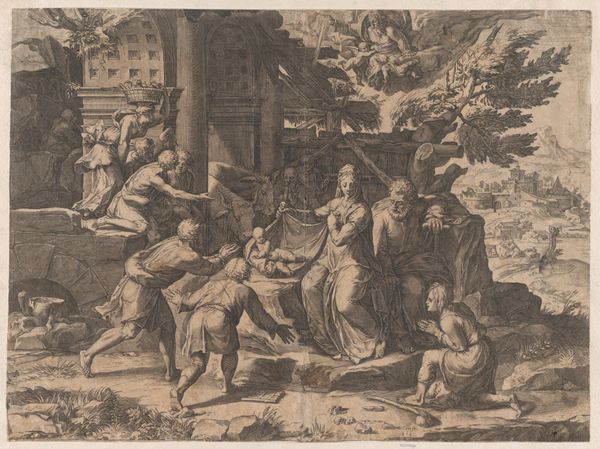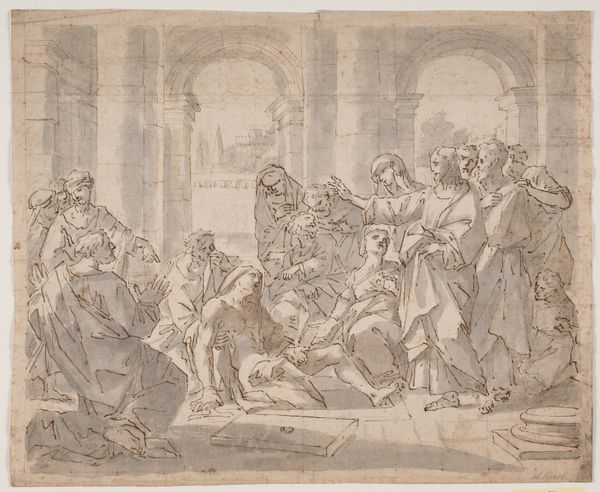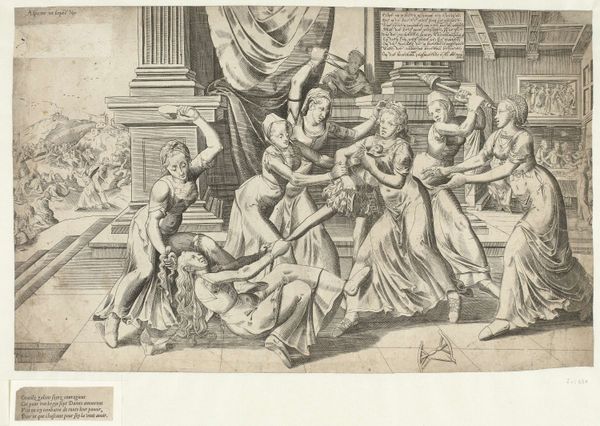
La Peste chez les Philistins (Plague Among the Philistines), in an album containing Recueil de Compositions par Lagrenée Le Jeune (Collection of Compositions by Lagrenée the Younger) 1782 - 1821
0:00
0:00
drawing, print, etching
#
drawing
#
narrative-art
# print
#
etching
#
genre-painting
#
history-painting
#
academic-art
Dimensions: Sheet: 15 13/16 × 21 9/16 in. (40.2 × 54.8 cm) Plate: 8 1/2 × 11 5/16 in. (21.6 × 28.8 cm)
Copyright: Public Domain
Curator: This print, "La Peste chez les Philistins" or "Plague Among the Philistines," is attributed to Jean Jacques Lagrenée the Younger, dating roughly from 1782 to 1821. The etching and drawing utilizes a sepia tone, quite striking actually. What's your initial take? Editor: My immediate response is… visceral. There's a certain immediacy in its depiction of suffering that’s hard to ignore. The bodies, the gestures, it evokes panic and despair. You almost smell the decay emanating from the print itself. Curator: Precisely! The way Lagrenée used etching to create textures is remarkable. Look at the fabrics clinging to the figures. Note also the use of shadows to sculpt bodies ravaged by disease, lending realism. How do you view its placement in history? Editor: Well, beyond the explicit narrative pulled from religious text, I’m seeing broader socio-political resonance. Think of how plagues and epidemics ravaged communities, prompting reassessments of power, social order, and institutional efficacy. This image speaks volumes about public health anxieties during a pre-modern world without robust scientific solutions. Curator: It also speaks, perhaps indirectly, to Lagrenée's own artistic influences. Academic art heavily emphasizes narrative painting; but this moment of societal collapse allows us also a view into the social fabric of the time it was produced, considering art consumption. It invites debate between art history and craft due to its being an etching. Editor: Yes, the choice of a print is fascinating when considering accessibility. Did this make it affordable and therefore widen access for viewers? Curator: Quite likely. Printmaking as a reproductive medium expanded audiences, though we must also factor in literacy rates. But indeed, the intent to circulate such imagery points toward a broader societal discourse. Editor: And that makes me consider further. Who controlled the means of this print production and its distribution? Was this officially commissioned, or produced independently for subversive means? These questions underscore how this work exists within economic power structures as well. Curator: Questions worth pursuing, definitely. Thanks for these perspectives. They illuminate both the art's subject and the socio-cultural conditions of its making and distribution. Editor: Thanks for the detailed intro to it, allowing this dialogue to emerge. Food for thought all around, right?
Comments
No comments
Be the first to comment and join the conversation on the ultimate creative platform.
